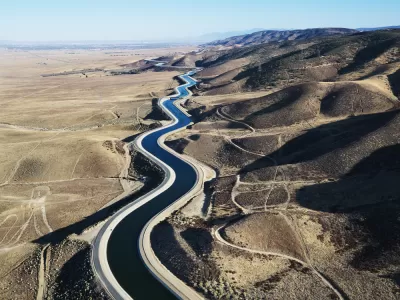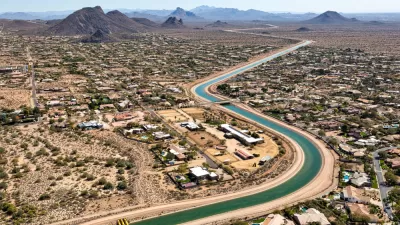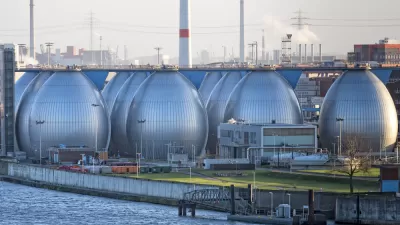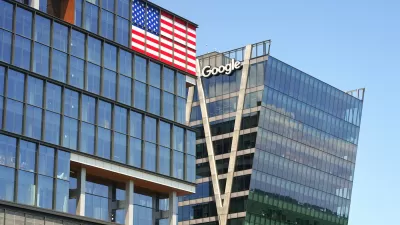With California’s water supply expected to drop by 10 percent in the next two decades, Governor Newsom’s strategy calls for conservation and increased investment in water collection, storage, and desalination infrastructure.

A new plan issued by California Governor Gavin Newsom outlines a strategy for reducing the state’s water use in advance of a projected 10 percent decrease in the state’s water supply. As reported by Ian James in the Los Angeles Times, “The plan focuses on accelerating infrastructure projects, boosting conservation and upgrading the state’s water system to match the increasing pace of climate change, securing enough water for an estimated 8.4 million households.”
“Drought is a permanent fixture here in the American West and California will adapt to this new reality.” — Gov. Gavin Newsom
As stated in the plan, “Targeted state funds and focus will support local efforts to conserve, capture, recycle, and de-salt enough water to allow California communities to prosper in a hotter, drier climate.” The strategy calls for expanding water storage capacity and groundwater recharge, speeding up wastewater recycling projects and runoff capture, and investing in desalination. “The plan includes targets and timelines, such as expanding desalination of brackish groundwater to 84,000 acre-feet by 2040, and boosting the state’s capacity to capture storm water by 500,000 acre-feet by 2040. For comparison, the total annual water use of Los Angeles is nearly 500,000 acre-feet.”
In May, California’s Coastal Commission rejected a governor-backed proposal to build a desalination project in Huntington Beach, dealing a blow to Newsom’s plans to expand desalination in the state. To date, 12 seawater desalination facilities operate in the state, with three proposals for new facilities making their way through the system.
FULL STORY: With California expected to lose 10% of its water within 20 years, Newsom outlines urgent action

Planetizen Federal Action Tracker
A weekly monitor of how Trump’s orders and actions are impacting planners and planning in America.

Map: Where Senate Republicans Want to Sell Your Public Lands
For public land advocates, the Senate Republicans’ proposal to sell millions of acres of public land in the West is “the biggest fight of their careers.”

Restaurant Patios Were a Pandemic Win — Why Were They so Hard to Keep?
Social distancing requirements and changes in travel patterns prompted cities to pilot new uses for street and sidewalk space. Then it got complicated.

Platform Pilsner: Vancouver Transit Agency Releases... a Beer?
TransLink will receive a portion of every sale of the four-pack.

Toronto Weighs Cheaper Transit, Parking Hikes for Major Events
Special event rates would take effect during large festivals, sports games and concerts to ‘discourage driving, manage congestion and free up space for transit.”

Berlin to Consider Car-Free Zone Larger Than Manhattan
The area bound by the 22-mile Ringbahn would still allow 12 uses of a private automobile per year per person, and several other exemptions.
Urban Design for Planners 1: Software Tools
This six-course series explores essential urban design concepts using open source software and equips planners with the tools they need to participate fully in the urban design process.
Planning for Universal Design
Learn the tools for implementing Universal Design in planning regulations.
Heyer Gruel & Associates PA
JM Goldson LLC
Custer County Colorado
City of Camden Redevelopment Agency
City of Astoria
Transportation Research & Education Center (TREC) at Portland State University
Camden Redevelopment Agency
City of Claremont
Municipality of Princeton (NJ)





























